Don't wanna be here? Send us removal request.
Text
Python Pygame Tutorial: Create Your First Game with Easy Examples

If you enjoy playing games and want to learn how to create your own, then this Python Pygame Tutorial is perfect for you. Pygame is a popular Python library that helps you make simple 2D games easily. It is great for beginners who want to start learning game development without needing advanced knowledge of programming.
This tutorial is designed in easy language so anyone with basic Python skills can follow along. You will learn how to create game windows, move characters, add background music, and control user input. The step-by-step lessons make it fun to build your first game while understanding how each part works.
What makes Pygame special is that it allows you to create interactive games with sound, images, and animations. It works well on most computers and is completely free to use. Whether you are a student, hobbyist, or future game developer, learning Pygame can be a great starting point.
This Python Pygame Tutorial doesn’t require any special tools—just Python and the Pygame library. With regular practice, you can build small projects like a bouncing ball, a maze game, or even a simple car racing game. It also improves your logical thinking and problem-solving skills.
If you're ready to start your journey into game development, follow the Python Pygame Tutorial. It’s an easy and enjoyable way to bring your creative ideas to life through coding.
0 notes
Text
Beginner’s Python PyTorch Tutorial: Start Your AI Journey Today
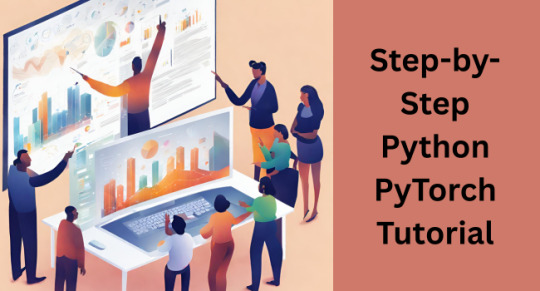
If you are interested in learning deep learning and artificial intelligence, then this Python PyTorch Tutorial is perfect for you. PyTorch is a popular open-source library used for machine learning and deep learning projects. It is developed by Facebook and widely used by researchers, developers, and data scientists.
This tutorial is made especially for beginners who want to understand the basics of deep learning. PyTorch is known for its simple and flexible design. It allows you to build, train, and test deep learning models with ease. One of the best features of PyTorch is its dynamic computational graph, which means you can change things on the go while building models.
In this Python PyTorch Tutorial, you will learn how PyTorch works, what tensors are, and how neural networks are created using this powerful library. The tutorial also covers important concepts like model training, loss functions, and optimizers—all explained in simple language.
Whether you want to build image recognition models, natural language processing applications, or any AI-related project, PyTorch is a great choice. Its clean syntax and helpful tools make learning deep learning less complicated for beginners.
If you are just starting out, don’t worry! This tutorial breaks down every concept in an easy-to-understand way. Begin your AI journey today with PyTorch.
To learn more and continue your learning, visit the Python PyTorch Tutorial
0 notes
Text
Complete Python Tkinter Tutorial: Master GUI Programming Easily
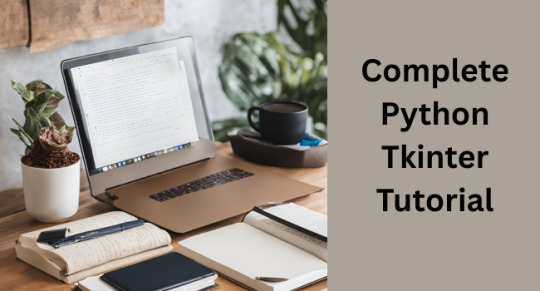
If you want to create desktop applications using Python, then this Python Tkinter Tutorial is the perfect place to start. Tkinter is the built-in GUI (Graphical User Interface) library in Python that helps you design windows, buttons, labels, and more for your application. It is easy to use and does not require any additional installation, making it ideal for beginners.
In this tutorial, you will learn how to design a basic window, add useful elements like buttons and text boxes, and create interactive features for your app. Tkinter is great for building small tools like calculators, to-do lists, form applications, and even games with simple interfaces.
The best part of this Python Tkinter Tutorial is that it explains each step clearly so that even someone with no GUI experience can understand. You will learn how each part of the interface works and how to connect them with user actions. This knowledge is very helpful if you are planning to build user-friendly desktop software.
Many students, developers, and hobbyists choose Tkinter because of its simplicity and strong community support. Whether you are learning Python for fun or for your career, understanding Tkinter gives you the power to make your applications look professional.
Start your journey with this easy and practical guide. For more detailed information, visit the Python Tkinter Tutorial.
0 notes
Text
Step-by-Step Python NumPy Tutorial with Real-Life Examples
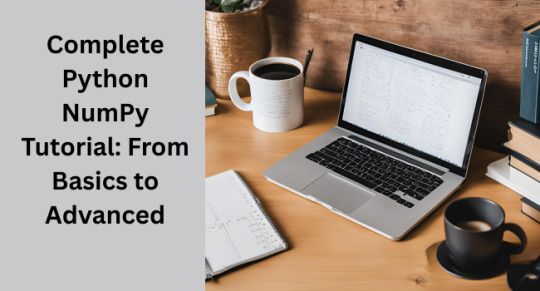
If you are starting with Python and want to explore data science or numerical computing, then this Python NumPy Tutorial is perfect for you. NumPy stands for “Numerical Python” and is one of the most important libraries used in data analysis, scientific computing, and machine learning.
NumPy makes it easy to work with large sets of numbers. It provides a special data structure called an “array” that is faster and more efficient than regular Python lists. With NumPy arrays, you can perform many mathematical operations like addition, subtraction, multiplication, and more in just a few steps.
This Python NumPy Tutorial helps you understand the basics of arrays, data types, and array operations. It also introduces important features like indexing, slicing, and reshaping arrays. These features allow you to manage and process data in a smart and simple way.
NumPy also supports working with multi-dimensional data. This means you can handle tables, matrices, and higher-dimensional data easily. Whether you’re working with simple numbers or complex datasets, NumPy gives you the tools to analyze and manipulate them effectively.
In short, this tutorial is a great starting point for beginners. It breaks down complex concepts into easy steps, making it simple to understand and follow. If you're planning to learn data science or work with big data in Python, learning NumPy is a must.
To read the full tutorial, visit Python NumPy Tutorial.
0 notes
Text
Python Flask Tutorial with Real Projects: Learn by Building
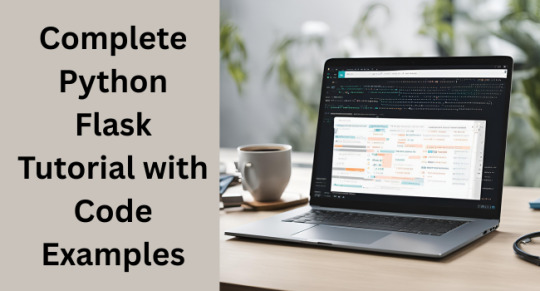
If you are new to web development and want to build your own web applications, then this Python Flask Tutorial is the perfect starting point. Flask is a lightweight and easy-to-use web framework written in Python. It helps you create websites and web apps quickly without getting overwhelmed by complex tools or heavy setups.
Flask is known for its simplicity and flexibility. You don’t need to be an expert in Python or web technologies to start with Flask. With just a basic understanding of Python, you can begin creating your own web pages, forms, and even connect them to a database.
One of the best things about Flask is that it doesn’t force you to follow strict rules. You can build your app step-by-step and add features as you go. This makes it great for beginners who want to learn and grow at their own pace. Whether you want to build a blog, a contact form, or a small online store, Flask gives you all the tools you need in a simple way.
In this Python Flask Tutorial, you will learn how to install Flask, create a basic app, and understand how web pages are displayed. The tutorial is designed to be beginner-friendly, with easy language and clear instructions. There is no need for advanced coding or complicated setups.
For a more detailed and complete tutorial, visit: Python Flask Tutorial
Start your web development journey today with Flask!
0 notes
Text
Learn Django from Scratch: Beginner-Friendly Tutorial to Master Web Develop
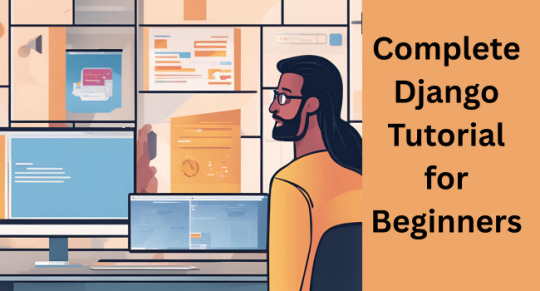
If you are new to web development and looking for an easy way to build websites, then this Django Tutorial for Beginners is just for you. Django is a high-level web framework written in Python. It helps developers build secure, fast, and scalable websites easily. The best part? It handles many common tasks so you can focus on building your project.
Django follows the “Don’t Repeat Yourself” principle. This means it saves your time by reusing code and giving you built-in tools for common website features like login, admin panels, and forms. Beginners love Django because it comes with clear documentation and a strong community ready to help.
To get started, you simply install Python and Django, create a project, and run the server. It may sound technical, but with step-by-step guidance, even someone with no coding experience can understand it. This tutorial walks you through each step in an easy and friendly way.
You will learn how to organize your project, connect it to a database, and create basic web pages. You won’t need to learn everything at once—just follow along and grow your skills as you go.
Whether you want to build a blog, portfolio, or a small online shop, Django gives you the tools to do it right.
For a complete and beginner-friendly guide, check out Django Tutorial for Beginners
0 notes
Text
Selenium with Python Tutorial: A Beginner-Friendly Guide

If you’re new to web automation or testing, then this Selenium with Python Tutorial is the perfect place to start. Selenium is a powerful tool used to automate web browsers. When combined with Python, it becomes even more flexible and easy to use.
Python is known for its simple syntax and readability. That’s why many testers and developers prefer using it with Selenium. With just a few lines of code, you can automate tasks like clicking buttons, filling out forms, and navigating web pages.
This Selenium with Python Tutorial is designed to help you understand the basics without feeling overwhelmed. First, you'll learn how to install the necessary tools, like Python and the Selenium library. Next, you’ll explore how to open a browser, visit websites, and interact with different elements on the page.
You’ll also discover how Selenium is useful for testing web applications. It can help find bugs early by simulating user actions and checking if everything works correctly. Whether you're a student, tester, or developer, learning Selenium with Python can save you time and make your work more efficient.
The best part is that you don’t need to be a programming expert to get started. With a little practice and patience, anyone can learn web automation.
To dive deeper into this topic, check out a detailed tutorial at: Selenium with Python Tutorial
0 notes
Text
Kickstart Your Coding Journey: Best Python Tutorial for Beginners in 2025

Are you new to programming and wondering where to begin? If yes, this Python Tutorial for Beginners is the perfect place to start. Python is one of the easiest and most popular programming languages today. It is widely used in web development, data science, automation, and even game development.
What makes Python great for beginners is its simple and readable syntax. Unlike other programming languages, Python looks more like plain English, making it easier to understand. You don’t need a background in coding to start learning Python. If you can follow step-by-step instructions, you're ready to go!
This Python Tutorial for Beginners will help you learn the basic concepts like variables, data types, loops, and functions without confusing technical terms. You’ll also understand how Python can be used to solve real-world problems. With time and practice, you’ll gain the confidence to create your own small projects.
Learning Python can also open up many job opportunities. Whether you want to become a software developer, data analyst, or work in AI, Python is a must-have skill.
The key to learning Python is practice. Start with simple tasks and move forward at your own pace. Don’t worry about making mistakes—that’s part of the learning process.
For a more detailed guide, visit Python Tutorial for Beginners. This resource is perfect for beginners and offers step-by-step tutorials in an easy-to-follow format. Happy learning!
0 notes